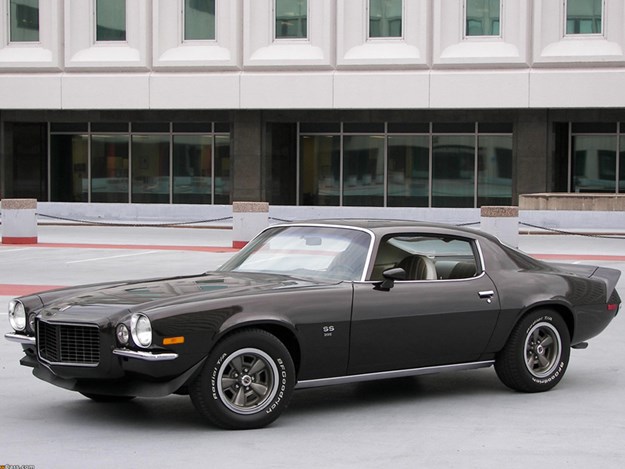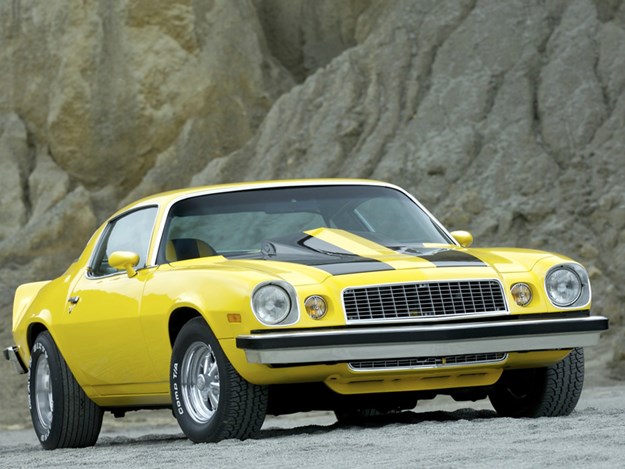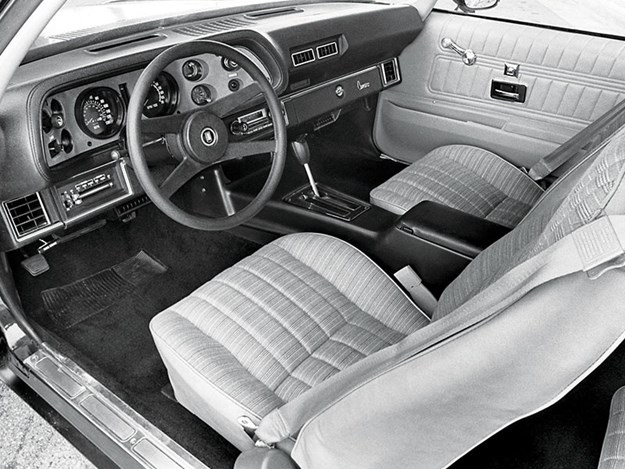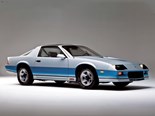Chevrolet Camaro (1971-1981) - Buyer's Guide



|
Longer, wider and heavier than the original with less to excite performance-focussed buyers
For quite some time and even now, Australia’s most famous Chevrolet Camaro was a blue car that ended its active racing career upside down and against a wall at the Mt Panorama race circuit.
Following years of arguments with motor sporting regulators about brakes, 1974 Bathurst 1000 winner Kevin Bartlett succeeded in transforming the lugubrious Camaro into a Touring Car front-runner. At the 1983 event it had a real chance of victory before a broken wheel literally turned Bartlett’s world on its head.
The second-generation Camaro was launched in February 1970. Described as a 1970 ½ model, these cars were longer, wider and heavier than the original, with less to excite performance-focussed buyers.

1973 brought the familiar ‘W’ nose design and 1974 a full-width front bumper. The Z28 performance pack was dropped in 1974 and didn’t resurface until 1977.
Largest of the SS ‘Super Sport’ engines was a big-block with 402 cubic inches (6.6 litres) producing a notional 375bhp or 278kW and it lasted only until 1973.
The majority of cars had 5.7-litre (350 cubic inch engines) that started out with an alleged 268kW but once ‘smog’ laws, low-lead fuel and legal requirements for truthful output claims had their way, the power from 1978 model Z28s dropped by half. From 1976 a 305 cubic inch (5.0-litre) motor was added.
Performance was affected, but not by as much as the plunge in claimed power might suggest. When tested, a late-1970s Z28 manual with the 5.7-litre motor stopped the 0-96km/h clock in 8.2 seconds. That was about 1.5 slower than pre-1970 cars. It also ran the standing 400 metres in 16.3 – a time similar to that recorded by Australia’s new V8 Commodore SL/E.

Sales during the 1970s recovered quickly and for 1978 247,000 Camaros sold, with 233,000 in 1979. Some from this era came to Australia as personal and dealer imports; helping Holden keep faith with its Monaro loving fanbase once the local model disappeared.
Most would have been 305 V8s with three-speed automatic transmission. As an Aussie buyer you might have expected your costly Camaro to be packed with luxury features, but disappointment was looming.
V8s did have power steering, some added power windows and air-conditioning. There was also perhaps a Rally Sport (RS) package which added twin mirrors, sports wheels and two-tone paint.
By the 1980s, decade-old Camaros were looking dated, but helping boost 1982 sales was a Pace Car tribute version. These came with lift-out ‘T Top’ roof panels, special paint and big ‘500’ decals on the doors. About 6400 were built, making them not especially rare but interesting.
.jpg)
Pre-1973 cars are considered more desirable, but a lot of later ones which have been fitted with uprated engines to address their lack of performance. Genuine four-speed manual cars will generate more money than an auto of the same age and condition.
These cars did remain very cheap for many years and average examples don’t cost a lot even now. Be wary of the ones that have been neglected because previous owners didn’t see them as worth restoring, or even properly maintaining in some instances.
Chevrolet Camaro (1977-81 Z28 Auto)
FAIR: $16,000
GOOD: $32,000
EXCELLENT: $45,000
(Note: exceptional cars will demand more)

BUYER'S CHECKLIST
Body & chassis
All these Camaros have been around for between 40 and 50 years and some spent time on wintery North American roads before emigrating. Thoroughly check the floors, rear quarters, sills, window apertures and door skins for rust or previous repairs. Door hinges wear and doors become hard to close. Cars with a vinyl covered roof are worth avoiding if they have bubbling or discoloured vinyl. A complete roof transplant could be required. Grilles, a variety of rust repair panels, new door handles, lenses and glass are available from specialists and not especially expensive. Bumpers seem more difficult to find than other parts.
Engine & transmission
V8 engines fitted as standard equipment to 1970s Camaros will be almost boring in their reliability. Those that are infrequently driven may leak from ancient hoses and dried out gaskets, so be prepared for some expense if a car hasn’t seen much use in years. Noisy valve lifters are very common and can be cured by an engine flush and oil change. Cars with larger than standard carburettors may also be chucking money down the exhaust pipes by delivering more fuel than a street-driven car can burn. Most Camaros of this age in Australia will have automatic transmissions that are very durable and easily repaired. A loose torque converter will produce knocking noises under acceleration.
Suspension & brakes
Age and deterioration can really ruin the way an older Camaro handles, and this can especially be a problem when the car has an older RHD conversion. Listen when driving for creaks and thumps from the front end and look underneath with the wheels on full lock for any power steering leaks or suspension components showing signs of wear. A quality set of shock absorbers will improve handling without a detrimental effect on ride quality. Excessively wide tyres can foul the inner mudguards on full lock. Disc brakes are recommended most that came new to this country should have them. Ensure that the parking brake releases without excessive force.

Interior & electrics
Local Camaros will have some powered accessories so check everything that works via a switch and test the speed and smoothness of electric windows, where fitted. The standard trim was vinyl, sometimes with a cloth insert and not difficult to replace if worn, or just repair. A business in the USA called Classic Industries offers complete sets of reproduction seat coverings (front and rear) for US$515 plus freight. Door trims and carpet sets are also being remade as are good quality reproduction instruments. These come individually at prices from US$100 for a fuel gauge to around $300 for a tachometer. A new speedo drive – often the cause of a non-functioning instrument – is just US$25.
1971-1981 Chevrolet Camaro specs
PRODUCTION: 1,948,233 (all models 1971-81)
BODY: Steel body with integrated chassis, two-door coupe
ENGINE: 5001, 5733 or 6489cc V8 with overhead valves, single downdraft carburettor.
POWER & TORQUE: 137.5kW @ 4000rpm, 365Nm @ 2400rpm (1978 Z28 5.7 litre)
PERFORMANCE: 0-96km/h – 8.6 seconds 0-400metres 16.3 seconds (5.7-litre Z28 4 speed)
TRANSMISSION: Three or four-speed manual, three-speed automatic
SUSPENSION: Independent with coil springs, control arms, anti-roll bar and telescopic shock absorbers (f) Rear: live axle with semi-elliptic springs, telescopic shock absorbers and optional anti-roll bar.
BRAKES: Disc or drum (f), drum (r) with power assistance
TYRES: G70-15 crossply
From Unique Cars #460, Dec 2021
Unique Cars magazine Value Guides
Sell your car for free right here
Get your monthly fix of news, reviews and stories on the greatest cars and minds in the automotive world.
Subscribe

.jpg)













